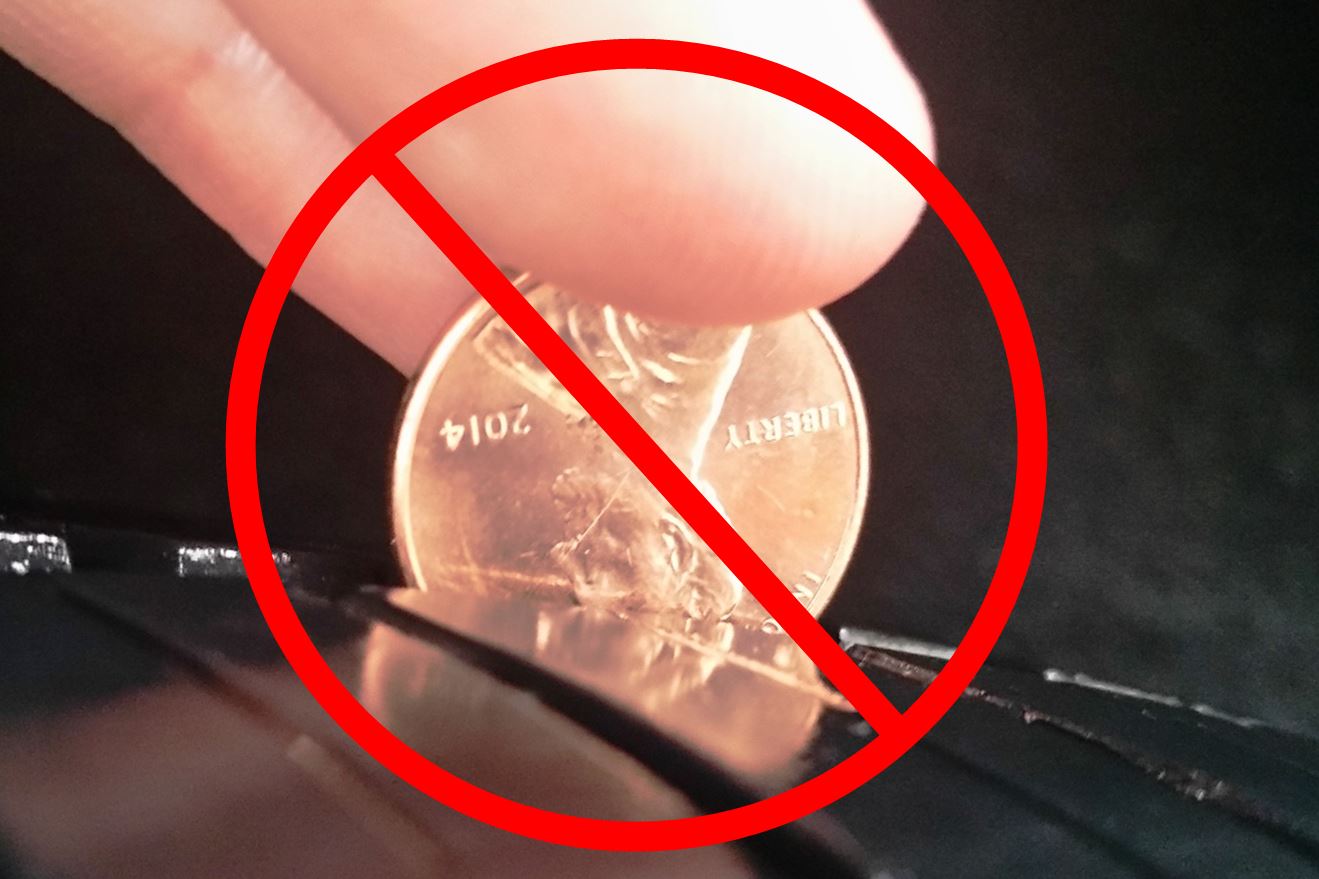
One of Abraham Lincoln’s greatest achievements was forever bequeathing us with his visage so we can use it to check the tread depth on our vehicle tires.
Okay, that’s not entirely true … but for many years, the “penny test” has been a go-to measurement for determining if car tires have worn down too far. Except the penny test isn’t fervently recommended as it once was, with some experts now recommending against using the penny test. Here’s why.
Stranded Without Air? Here’s a simple guide to changing a flat tire
Before I explain why auto industry professionals like those at The Tire Rack have been proclaiming the need to switch from pennies to quarters, you have to properly understand what the penny test is.
In case you’ve never performed this test, it involves taking a one-cent coin, rotating it so the top of Abraham Lincoln’s head is pointed toward the car tire’s tread, and slotting it between the tread rows. By seeing how much of his head is visible from the side and how much is still obscured, you can determine if the rubber tread is worn down enough to necessitate installing new tires. If you see his whole head, the tire tread is too shallow.
The reason the penny is the coin commonly used for this simple assessment is because the gap between Lincoln’s head and the edge of the coin is 2/32 inches — the measurement mandated by the U.S. Department of Transportation as the legal minimum depth for drivable tread depth on passenger vehicles. That measurement also is — according to John Rastetter, director of tire information at The Tire Rack — the point where most tire warranties become voided.
Buying New Tires: Here’s a beginner’s guide to picking the right set
While those guidelines haven’t changed, some experts have wondered if there’s much of a difference between driving on 2/32-inch tread and 4/32-inch tread. Obviously, there is. Tire Rack performed evaluations that showed that this increase reduces braking distance and improves traction on wet surfaces. Thus, safety is largely improved on deeper-tread tires.
That’s why these tire experts are now recommending you use a quarter to test tire tread. Using the same methodology but with George Washington’s head on a quarter, you can assess if it’s time to replace the tires when they reach 4/32 inches.
Obviously, the more tread your car’s tires has left on it, the better it will perform on the road. While replacing your tires early is admittedly better for tire retailers’ profits, it’s also better for your safety. The question is how much you’ll wear down your car’s tires until you’re willing to replace them.
Aaron is unashamed to be a native Clevelander and the proud driver of a Hyundai Veloster Turbo (which recently replaced his 1995 Saturn SC-2). He gleefully utilizes his background in theater, literature, and communication to dramatically recite his own articles to nearby youth. Mr. Widmar happily resides in Dayton, Ohio with his magnificent wife, Vicki, but is often on the road with her exploring new destinations. Aaron has high aspirations for his writing career but often gets distracted pondering the profound nature of the human condition and forgets what he was writing… See more articles by Aaron.



